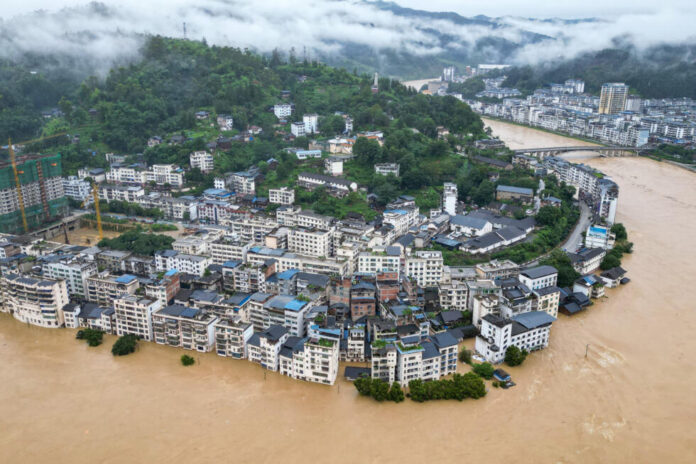The summer monsoon has brought relentless rain to China southwest, forcing over 80,000 people from their homes in Guizhou province by June 24, state media reported. Local authorities ordered rapid evacuations as rivers overflowed, roads vanished beneath muddy water, and entire communities found themselves cut off.
In Rongjiang County, a football field sank under three meters of murky water, and a bridge collapsed into the swollen river below. Dramatic video from state broadcaster CCTV shows emergency teams pulling a frightened truck driver from a stranded rig on a damaged span. Residents, caught off guard by the fast-rising water, scrambled to upper floors before rescuers arrived by boat.
Officials used drones to scout flooded villages and drop supplies, including rice and drinking water, to families trapped by the surge. Along mountain roads, military engineers cleared fallen trees and reinforced riverbanks with sandbags. In hard-hit areas, temporary shelters sprang up in schools and community centers, where volunteers handed out blankets and medical kits.
The flooding in Guizhou followed days of downpours that also forced evacuations in neighboring Guangxi and Hunan provinces. Tens of thousands more moved to safety as local governments raised emergency levels. Last month’s Typhoon Wutip drove mass displacements along China’s southern coast, and this week’s heatwave in central China has tested power grids and strained water supplies.
Beijing has raised its heat alert to the second-highest level, warning citizens to avoid outdoor work during peak hours. Forecasters expect more storms later this week, and authorities have urged farmers to harvest crops early and prepare drainage channels. In city centers, workers cleared blocked storm drains, while volunteers checked on elderly residents living in low-lying neighborhoods.
Climate experts point to a pattern of extreme swings between heavy rain and intense heat across East Asia. They say rising global temperatures let the air hold more moisture, which then dumps in sudden downpours. At the same time, stalled weather systems can bake regions for days. Chinese officials have said they will expand renewable energy projects and cut carbon emissions, but they face the challenge of meeting growing power needs in hot seasons.
Sources: ShiaWaves

